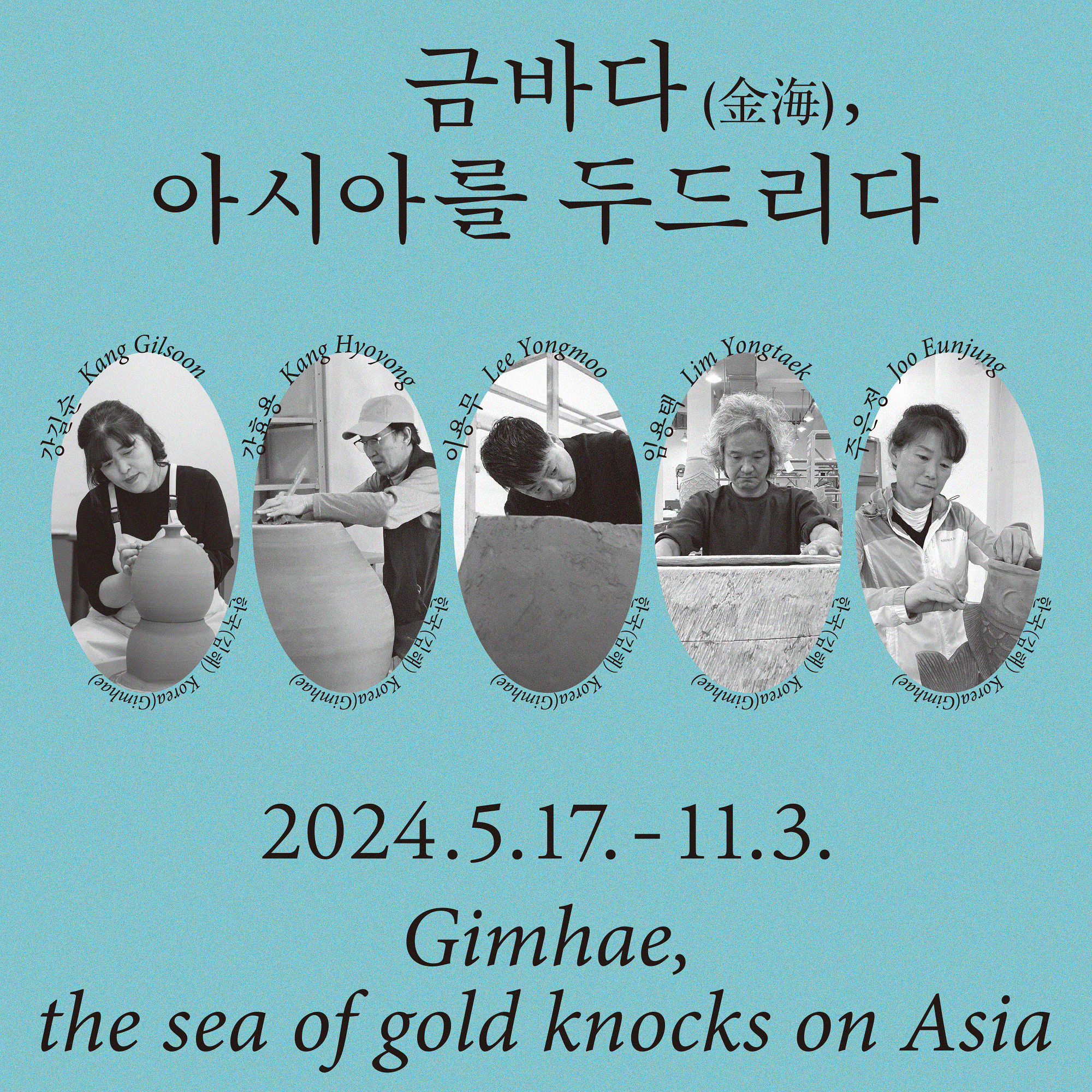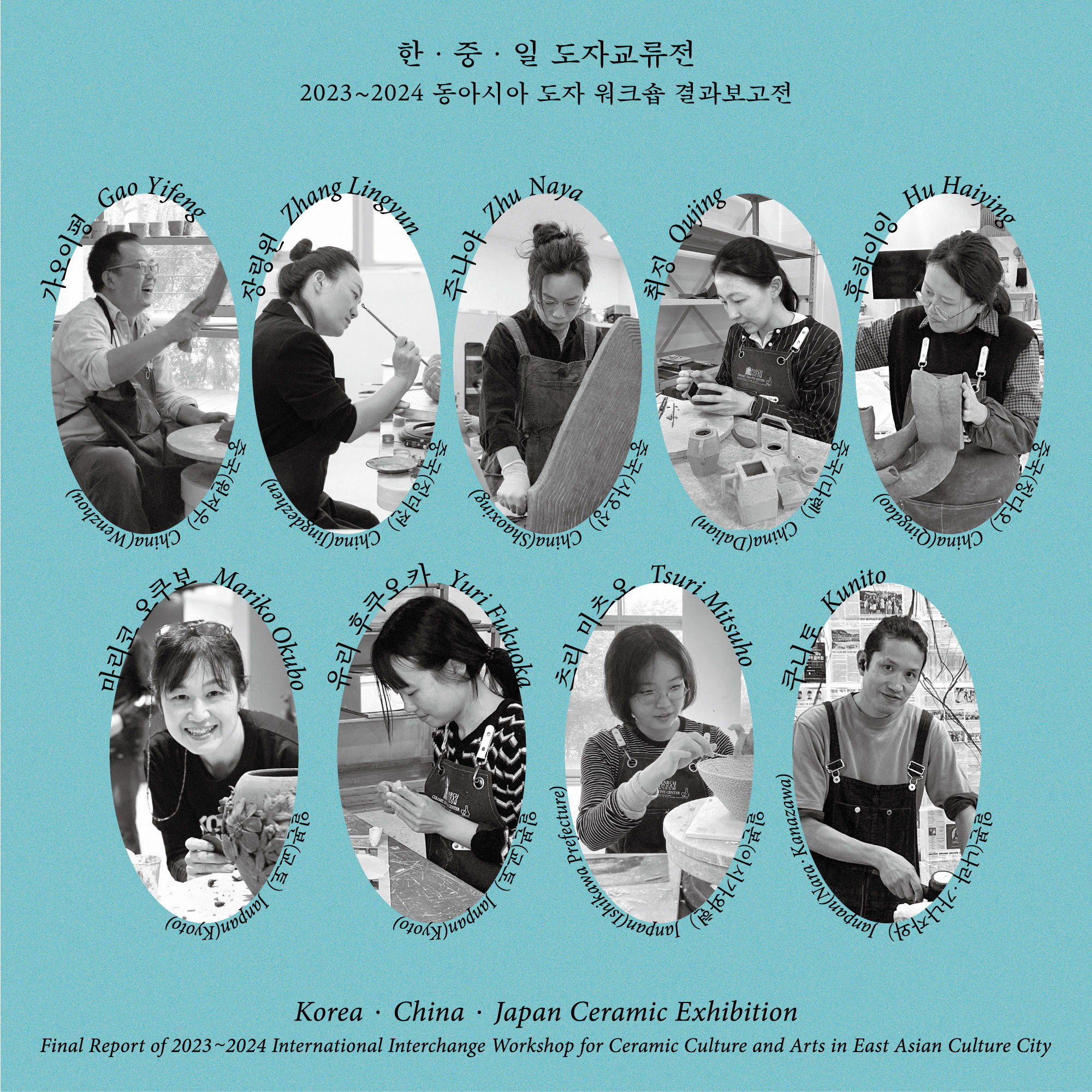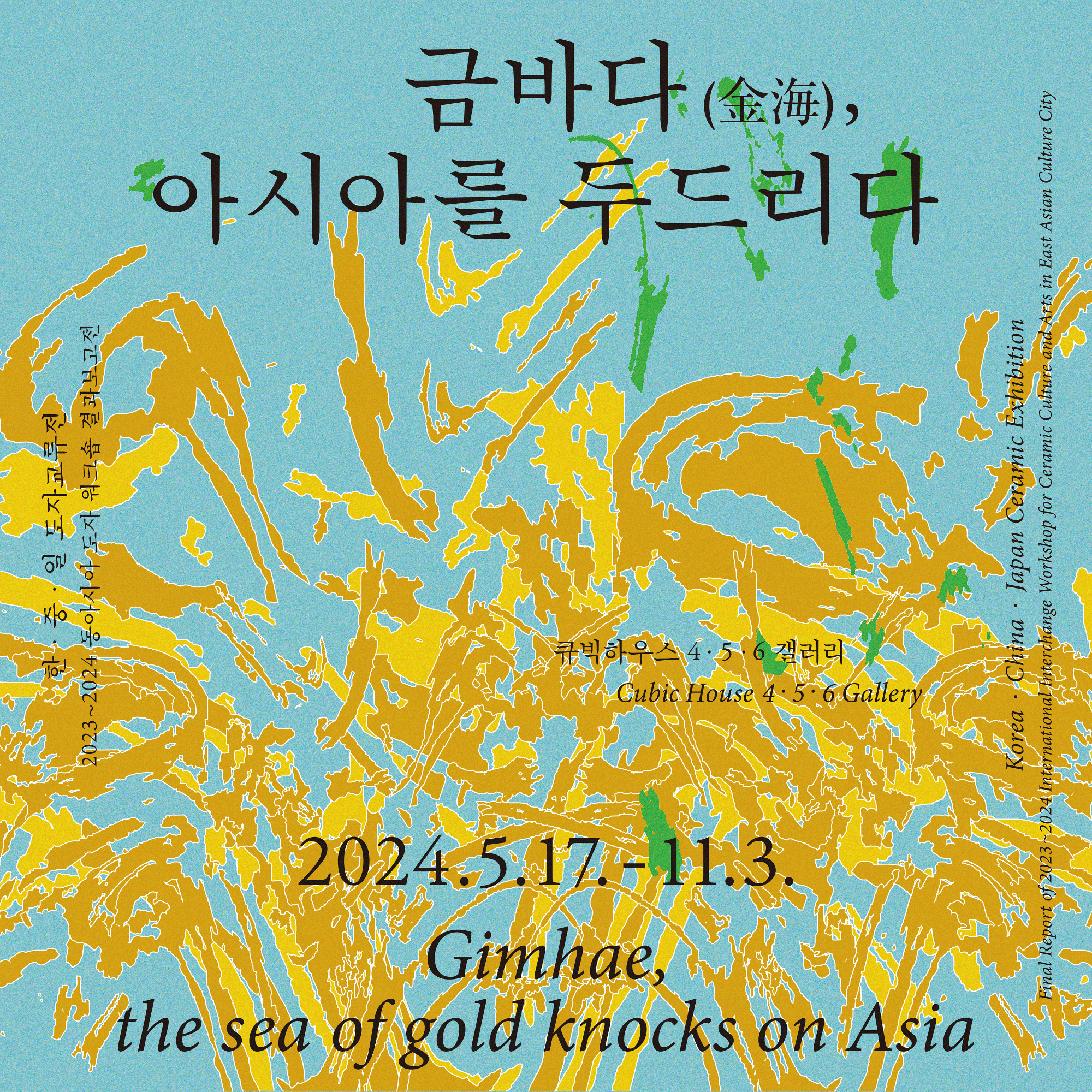


Korea-China-Japan Ceramic Exhibition
Final Report of 2023-2024 International Interchange Workshop for Ceramic Culture and Arts in East Asian Culture City
〈Gimhae, the sea of gold knocks on Asia〉
○ Period: May 17, 2024 - November 3, 2024
○ Location: Clayarch Gimhae Museum – Cubic House Gallery 4-6
○ Participants
1. 平穩 Peace: Kang Gilsoon(Gimhae, Korea), Lee Yongmoo(Gimhae, Korea), LingYun Zhang(张凌云/Jingdezhen, China), Zhu Naya(竺娜亚/Shaoxing, China), Mariko Okubo(大久保 真理子/Kyoto, Japan)
2. 調和 Harmony: Lim Yongtaek(Gimhae, Korea), Qujing(曲晶/Dalian, China), Mitsuho Tsuri(釣光穂/Ishikawa, Japan), Kunito(クニト/Kanazawa&Nara, Japan)
3. 動&靜 Movement: Kang Hyoyong(Gimhae, Korea), Joo Eunjung(Gimhae, Korea), Gao Yifeng(高艺峰/Wenzhou, China), Haiying Hu(银杏叶/Qingdao, China), Yuri Fukuoka(福岡佑梨/Kyoto, Japan)
○ Preface
In commemoration of Gimhae City's 2024 selection as an East Asian cultural city, the Clayarch Gimhae Museum of Art held international interchange workshops between Korea, China and Japan from October to November 2023 and March to May 2024, respectively. A total of 14 ceramic artists from the previous East Asian cultural cities and UNESCO Creative Cities Network (craft and folk art) from Korea, China and Japan have been reside at the museum's residence and produced works through workshops to share and interchange ceramic cultures from their respective regions, and the results are presented through the this exhibition.
The workshop, which was conducted to promote cultural diversity by promoting economic, social and cultural development through diverse cultural exchanges and convergence, fostering cultural industries based on the cultural assets and creativity of cities, and promoting sustainable development through cooperation between cities, was conducted through "ceramic" to understand the city culture of each country's participating artists, and interchange materials and techniques, which provided a new inspiration and a foothold for growth to all.
The exhibition was set up in accordance with the 'aesthetic consciousness' of East Asia, which can be commonly found in the works that are the result of such interchanges. 1. Peace: Kang Gilsoon, Lee Yongmoo, Zhang Lingyun, Zhu Naya, Mariko Okubo → 2. Harmony: Lim Yongtaek, QuJing. Tsuri Mitsuho, Kunito → 3. Movements: Kang Hyoyong, Joo Eunjung, Gao Yifeng, Hu Haiying, Yuri Fukuoka.
Today, the aesthetic value is shaking the world to the extent that it can be said that the world is at war over beauty. The intangible value of culture is a major issue as sophisticated aesthetic consciousness symbolizes the country's national character and creates a national brand, and awareness and growth through interchange are inevitable for the development of the cultural industry.
It is true that the three countries of Korea, China, and Japan have had considerable distance in terms of political system and economic structure until now. Nevertheless, the three countries jointly have the tradition and history of Chinese character culture. In addition, since ancient times, Confucianism, Buddhism, Taoism, and the five elements of yin and yang have been shared and developed. Based on this, various things such as genre painting, clothing, gardens, and traditional dance can be discussed as having blossomed their own culture, but we cannot leave out ceramics. All three countries have a long history of ceramics. In the case of China, it is 2,000 years from the Han Dynasty’s Huitao, and 1,600 years from Yuezhouyao, the early celadon of the 4th century. Korea also has a history of ceramic for 2,000 years from the Proto-Three Kingdoms period, and 1,000 years from Goryeo celadon. In the case of Japan, since the 17th century, they joined Oriental ceramics, but before that, there was a great earthenware culture called Jomon pottery, and there is a 1,500-year history of pottery from Sueki earthenware that inherited Gaya pottery.
Beauty is a universal spiritual value that all human beings can share, but it has special characteristics in that it shows different patterns depending on the times, ethnicities, and environment. Ko Yu-seop (1905-1944) regarded the characteristics of Korean beauty as the aesthetics of simplicity and honesty, that is, nature and naturalness. Yanagi Muneyoshi (1889-1961) said that among the three elements of the sculpture, China has strong formality, Japan has bright colors, and Korea has beautiful lines. The shape of Chinese ceramics shows perfection, and the color of Japanese ceramics pursues cleanliness, but the lines of Korean ceramics boast soft curvedness.
As such, the aesthetic consciousness of the three countries appeared in various forms depending on the time and region, but at the root of it has some common and lasting characteristics. That is the "tao" and the "heart", and ultimately, as all human activities belong to nature, it is an attitude of life that always obeys nature and lives with it. In addition, art creation, including sculpture, was identified as a matter of the "mind" and tried to express it with the heart. In other words, it can be characterized as the art of the mind or the art of the spiritual. In other words, the aesthetic thoughts of the East intend to be able to look back on what is the true human value for the destruction and loss of humanity caused by the values of the machinery and technology era, and the damage to nature caused by production and development.
The three nations of Korea, China, and Japan should continue to cultivate the fine aesthetic culture of the East through interchanges based on their cultural consensus, and through this, through various cultural exchanges and convergence, economic, social, and cultural development through cooperation between cities, it will be possible to promote cultural diversity and further promote sustainable development in each country. However, no matter how outstanding an artwork is, it will be buried if the world does not recognize it. I hope that each visitor will be able to discover their own perspective through the diversity of artists who share similar cultures but have different roots.